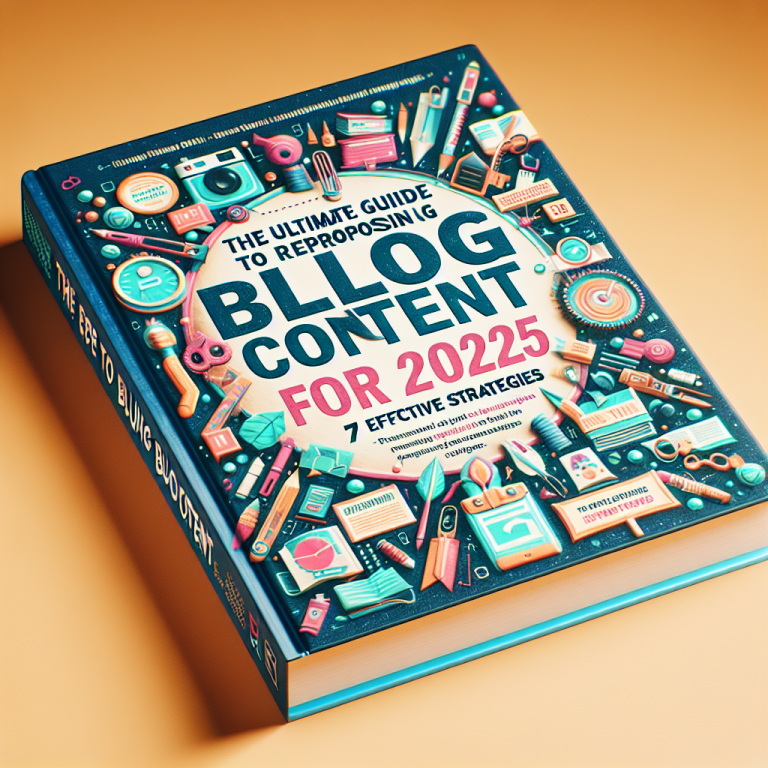How to Use Social Media Ads to Grow Your Business Faster Than Ever
Understanding Your Audience is Key
Defining the Target Audience
Before I even think about setting up an ad, I take a moment to define who I’m actually trying to reach. It’s super crucial. I mean, if I don’t know who my audience is, how can I create relevant ads that catch their attention? I often use tools like audience insights from platforms like Facebook or Instagram to dig deep.
Remind yourself that your audience isn’t a monolith. There are various segments within it, each with its own preferences and behaviors. In my experience, developing customer personas helps frame this understanding and creates a pathway for more tailored content and messaging. It takes time but is definitely worth it.
Lastly, I’m always looking to gather feedback. Whether it’s through surveys, comments, or direct messages, this direct insight helps me adjust my targeting and refine my approach over time. Constant learning is the name of the game.
Analyzing Audience Behavior
Once I’ve got my audience figured out, I dive into analyzing their behavior on social platforms. This means looking at what content they engage with most often. Are they clicking, liking, sharing? Watching videos or reading posts? I find that tools like Google Analytics or social media internal analytics give me a lot of the dirt.
I’m also a big fan of A/B testing different types of content and seeing what resonates. It’s all about trial and error. Sometimes, a simple tweak in messaging can lead to significant results. Experimentation is the way to unlock the gold mine of engagement.
By keeping an eye on analytics, I get a clearer picture of what my audience enjoys, which assists in crafting future ads. It’s not just numbers; it’s about understanding the human behavior behind those numbers and genuinely connecting with them.
Creating Engaging Content
Creating content that genuinely connects with my audience has become an art—and a science! I always bring in the visuals, because we all know a picture speaks a thousand words. High-quality images and videos can grab attention faster than a text post ever could. Plus, visually appealing ads are more shareable, and that’s the goal!
Another tip from my playbook is storytelling. People love to connect with stories, whether they’re personal anecdotes or brand narratives. Sharing real-life examples helps put a human touch to the ads that makes them relatable. When people can see themselves in what you’re doing, they’re more likely to engage.
Lastly, I try to keep the content consistent with my brand voice. Whether I’m being playful, informative, or straightforward, maintaining a coherent voice across all platforms makes me more recognizable. And consistency builds trust, which is essential for any business’s growth!
Choosing the Right Platform
Identifying the Best Fit
This might be one of the most significant steps in using social media ads effectively: picking the right platform. I’ve learned the hard way that not all platforms are created equal. Depending on my audience’s demographics—like age, location, and interests—some platforms will work better than others.
For example, I’ve found success with Instagram for visually-rich products, while LinkedIn is the go-to for more professional services and B2B offerings. Knowing where my audience hangs out online is half the battle won.
I also like to keep an eye on trends. Sometimes a platform I didn’t consider can take off in popularity and becomes a valuable ad space. Keeping flexible helps in seizing new opportunities as they arise.
Utilizing Cross-Promotion
You know what else works wonders? Cross-promotion! I often run ads on multiple platforms simultaneously, modifying the content slightly for each. This way, I increase visibility and reach. It’s like having a megaphone at a party—you want everyone’s attention!
The beauty of cross-promotion is that it can cater to different audience segments while still directing them back to my main goal. Even better, using social media ads to promote my other online content works seamlessly. Whether it’s an eBook, blog, or newsletter, it keeps the engagement flowing.
Plus, it allows for a cohesive brand presence across platforms. When audiences see messages repeated in different formats, it reinforces my marketing narrative, making it more likely they remember me when they need my services.
Making the Most of Ad Features
Each social media platform has unique ad features that can elevate my campaigns. For instance, I’m a huge fan of Facebook’s targeting options. I can segment by interests, behaviors, and even lookalike audiences, which is a game changer. It means I’m spending money reaching the folks who are most likely to convert.
Engaging call-to-actions (CTAs) are another feature I never overlook. A simple ‘Shop Now’ or ‘Learn More’ can direct users where I want them to go, making it a lot easier to convert in the long run. I’ve realized that incorporating interactive elements like polls or quizzes can ignite higher engagement as well.
Moreover, taking advantage of analytics tools provided by the platforms allows me to keep a constant pulse on performance. I can track what’s working and what’s flopping in real time, which helps me pivot my strategy quickly if needed.
Budgeting Wisely
Setting Realistic Budgets
To grow faster, I can’t just throw money at ads without a plan. Setting a realistic budget is a big component of managing social media advertising. Early on, I made that mistake—believing that a larger budget equaled better results. Not necessarily true!
I like starting with a small test budget that allows me to gauge what works best. Once I see the results, I slowly scale up my investments. This method not only minimizes financial risks but also provides clear insights on what’s worth investing more into.
Being adaptable is also key. If I notice a particular ad type consistently outperforms another, reallocating my budget to favor that can yield much better results. Flexibility in budgeting has made a world of difference in my campaigns.
Tracking ROI
For me, tracking the return on investment (ROI) of my ads is non-negotiable. Understanding what I get back compared to what I spend helps me make smarter marketing decisions. Tools like Google Analytics and social media insights can illuminate a lot about my ad performance.
I pay close attention to metrics such as click-through rates, conversions, and engagement levels, considering any adjustments I need to make. When I see what’s working, I double down; when it’s not, I change course.
It’s an ongoing learning process. Just like I said earlier—ads are not set-it-and-forget-it. Regular reviews of my investments help me stay in tune with effective strategies that drive growth.
Experimenting with Ad Formats
Lastly, I love experimenting with different ad formats. From carousel ads to video ads, each type has its unique strengths. For my visual products, video ads can be magic; they grab attention in a way that static images sometimes don’t.
Each platform has new formats popping up all the time, and staying on top of those trends can give me an edge. For instance, I’ve tried Stories ads on Instagram and found that they create a sense of urgency with short-lived content which can drive immediate action.
Ad creativity doesn’t just help capture attention; it also symbolizes innovation. I believe that keeping ads fresh plays a vital role in ensuring continual audience engagement and excitement about my brand. It’s about being memorable!
Analyzing & Adjusting Your Campaigns
Regular Performance Assessments
Analyzing ad performance shouldn’t be a once-in-a-while thing—it’s gotta be a regular gig! I make it a point to sit down weekly or bi-weekly and dive into how my ads are performing. Metrics give me insights into what’s resonating with my audience and what’s not.
I look at engagement metrics first, because they can indicate how well my content is being received. After all, if people are engaging, that usually means I’m on the right track. However, high engagement doesn’t always equal conversions. Tracking the full customer journey helps me pinpoint any necessary adjustments.
During these assessments, I commonly see trends emerge. For example, I might notice certain ad styles are consistently performing better. Documenting these trends helps inform my future campaigns, allowing me to evolve my approach based on real insights.
Iterative Improvements
Once I’ve gathered insights, it’s time to iterate. I’m constantly tweaking my ads, whether that means modifying visuals, reworking copy, or rethinking audience targeting. Every adjustment, no matter how small, can have a significant impact on performance.
Some changes I’ve implemented based on performance data include experimenting with ad copy length or repositioning key information. Sometimes, it’s all about finding the best combination of elements that resonate with my audience.
Don’t be afraid of failing, either! Testing new strategies is just part of the game. I had an ad campaign recently that flopped, but the lessons from that were priceless, showing me what my audience didn’t connect with. It’s about continuous improvement!
Staying Updated with Trends
The digital landscape is always changing, and so are social media advertising trends. What worked last year might not work this year, and keeping up is crucial. I make it a habit to follow marketing blogs, attend webinars, and join relevant groups to stay in the loop with the latest strategies and changes in algorithms.
Networking with fellow marketers also provides real-time insights into what’s happening in the industry. We share experiences, tools, strategies, and support—sometimes you can get the juiciest tips right from someone else’s trial and error.
Ultimately, staying adaptable and informed ensures that my social media ads evolve with the times, keeping my campaigns fresh and relevant. This adaptability leads to sustained growth and continued relationships with my audience, and that’s the name of the game!
Frequently Asked Questions
1. What are the main benefits of using social media ads for my business?
Social media ads can greatly increase your visibility and reach, allowing you to connect with a targeted audience. They also come with powerful analytics, allowing you to track performance and make informed adjustments.
2. How do I determine my ad budget?
The key is to start small, test different campaigns, and then scale based on what works. It’s essential to set realistic budgets and continually evaluate the return on investment from your ad spend.
3. Which platform should I choose for my ads?
This depends on your target audience and where they spend their time online. For example, Instagram is great for visually-driven businesses, while LinkedIn works better for B2B marketing.
4. How can I make my ads more engaging?
Focus on high-quality visuals, storytelling, and clear calls to action. Testing different formats and creative approaches can also help you find what resonates best with your audience.
5. How often should I analyze my ad performance?
I recommend conducting regular performance assessments, ideally weekly or bi-weekly. This way, you can quickly identify trends and make adjustments in real time for the best results.








